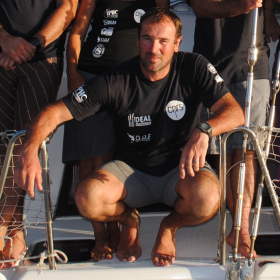Estimation of the Maternal Investment of Sea Turtles by Automatic Identification of Nesting Behavior and Number of Eggs Laid from a Tri-Axial Accelerometer
Estimation of the Maternal Investment of Sea Turtles by Automatic Identification of Nesting Behavior and Number of Eggs Laid from a Tri-Axial Accelerometer
Jeantet, L.; Hadetskyi, V.; Vigon, V.; Korysko, F.; Paranthoen, N.; Chevallier, D. Estimation of the Maternal Investment of Sea Turtles by Automatic Identification of Nesting Behavior and Number of Eggs Laid from a Tri-Axial Accelerometer. Animals 2022, 12, 520. https://doi.org/10.3390/ani12040520
Monitoring reproductive outputs of sea turtles is difficult, as it requires a large number of observers patrolling extended beaches every night throughout the breeding season with the risk of missing nesting individuals. We introduce the first automatic method to remotely record the reproductive outputs of green turtles (Chelonia mydas) using accelerometers. First, we trained a fully convolutional neural network, the V-net, to automatically identify the six behaviors shown during nesting. With an accuracy of 0.95, the V-net succeeded in detecting the Egg laying process with a precision of 0.97. Then, we estimated the number of laid eggs from the predicted Egg laying sequence and obtained the outputs with a mean relative error of 7% compared to the observed numbers in the field. Based on deployment of non-invasive and miniature loggers, the proposed method should help researchers monitor nesting sea turtle populations. Furthermore, its use can be coupled with the deployment of accelerometers at sea during the intra-nesting period, from which behaviors can also be estimated. The knowledge of the behavior of sea turtle on land and at sea during the entire reproduction period is essential to improve our knowledge of this threatened species.
BOREA Contact: Damien Chevallier, damien.chevallier@cnrs.fr


